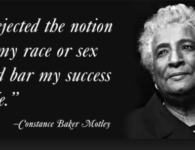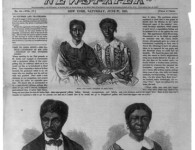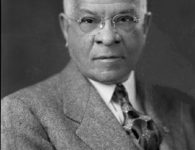On this date in 1849, the case of Roberts v. The City of Boston began. This lawsuit was on behalf of a #Black five-year-old who was barred from school.
The suit was heard by the Massachusetts Supreme Court and was a prerequisite legal ruling in the civil rights cases of the NAACP’s assault on America’s segregated educational system. The judge presiding was Chief Justice Lemuel Shaw. In 1848, five-year-old Sarah Roberts was barred from the local primary school because she was Black; her father Benjamin sued the city. The lawsuit was part of an organized effort by the African-American community to end racially segregated schools. A city ordinance passed in 1845 said any child “unlawfully excluded from the public schools” could recover damages (which meant they could sue the city). Little Sarah had been forced to walk past five other schools to reach the “colored” school in Smith Court. Now all Sarah’s lawyers had to do was prove that she had been barred from those other schools unlawfully! Benjamin Roberts violated no law when he took his daughter to be enrolled.
School authorities argued that special provisions had been made for “colored” students. Since Boston maintained racially segregated schools, that Sarah passed five White schools on her way to the black schools, the school board contended, was of no consequence. Roberts retained the talented attorney, abolitionist, and later United States Senator Charles Sumner. Sumner worked with Robert Morris, a young Black abolitionist and activist lawyer from Boston. This formidable legal team broke new ground in their argument before the court. Invoking “the great principle” embodied in the Constitution of Massachusetts, they asserted that all persons, regardless of race or color, stand as equals before the law.
In April 1850, the Supreme Judicial Court issued its ruling in Roberts v. Boston. Chief Justice Shaw, unmoved by impassioned oratory about freedom and equality, decided the case on narrow legal groups, ruling in favor of the right of the school committee to set education policy as it saw fit. Shaw could find no constitutional reason for abolishing Black schools. Boston’s schools would remain segregated. The community was stunned.
Reference:
Historic U.S. Cases, 1690-1993:
An Encyclopedia New York
Copyright 1992 Garland Publishing, New York
ISBN 0-8240-4430-4




















2 Comments
Levitra Modalita Di Assunzione Cialis Vademecum Cialis Spanien
I am glad to be one of the visitors on this great website (:, appreciate it for posting .